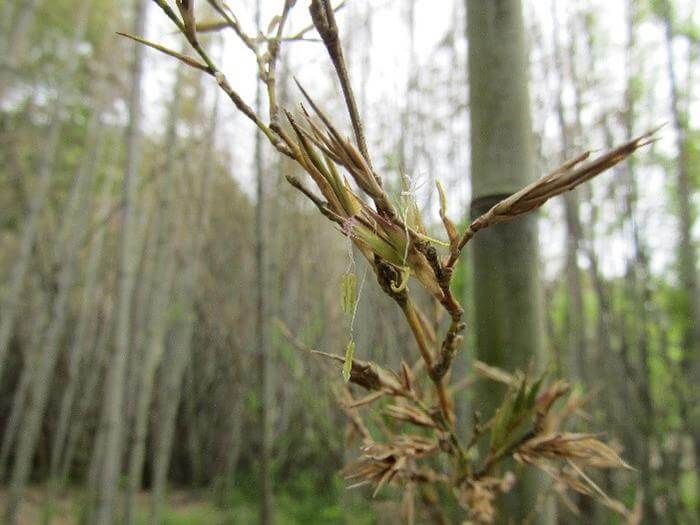A rare species of bamboo known as Phyllostachys nigra var. henonis has a unique and long life cycle, with plants flowering only once every 120 years before dying. However, a recent study has revealed that this monocarpic bamboo species faces an additional challenge: most of the flowering specimens do not produce viable seeds.
This bamboo species, found in Japan, has a remarkable flowering pattern where it blooms only once in its lifetime, followed by its death, making way for the next generation. However, researchers have discovered that a significant percentage of flowering culms do not yield viable seeds, which could have ecological and economic implications.
The study, published in PLOS ONE, aimed to investigate the regeneration ecology of this bamboo species since the last recorded flowering event occurred around 1908. The researchers observed that over 80% of the sampled bamboo culms flowered, but none of them produced seeds capable of germination. This lack of seed germination means that this particular variety of bamboo does not reliably undergo sexual regeneration through seeds.
Toshihiro Yamada, the lead researcher and first author of the study, explained, “The bamboo did not produce any viable seeds that can germinate. Bamboo shoot production was stopped after flowering. There was no sign of regeneration of this bamboo after flowering for the initial three years.”
Approximately 0.17 million hectares of Japan are covered by various bamboo species, including Phyllostachys nigra var. henonis. Given that this bamboo variety fails to produce viable seeds, the flowering event could result in vast grasslands, altering the local ecology and reducing the availability of bamboo as a resource.
The environmental impacts of such a rapid shift in the ecological landscape extend beyond the insects and animals that rely on bamboo for food and shelter. It can also lead to soil erosion, as bamboo’s strong and extensive rhizomes play a crucial role in stabilizing soil. A sudden loss of a large bamboo area can change the area’s topography and lead to soil erosion.
Yamada noted, “A bamboo stand will turn into a grassland after bamboo flowering for at least several years. We may need to manage this drastic change after bamboo flowering.”
To mitigate the ecological habitat’s impact during the period of bamboo regeneration, measures such as fertilizer applications or replanting the same bamboo species from non-flowering stands can be considered. However, managing the rapid spread of rhizomatous bamboo can present challenges, requiring regular and potentially aggressive intervention.
Further research is needed to understand why this bamboo variety produces so few viable seeds, which could impact its long-term survival. Given its aggressive growth and management challenges, the most opportune time for widespread changes may be after the flowering event when the bamboo is at its weakest.


